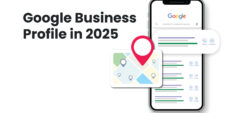As you probably know, humans are visual beings. This means that sight is the primary sense we rely on.
This claim is supported by science, as it has been proven that a third of our brain cortex is in charge of visual processing, while for other senses less than 10% of the brain cortex is engaged.
Due to that, visual search is growing every day, and the number of its users and searches is increasing rapidly, especially among younger generations like Millenials, Gen Z, and even among upcoming Gen Alpha.
To help prepare, in this blog post, we’ve gathered some great tips on leveraging visual search to enhance your SEO efforts in 2023 and beyond.
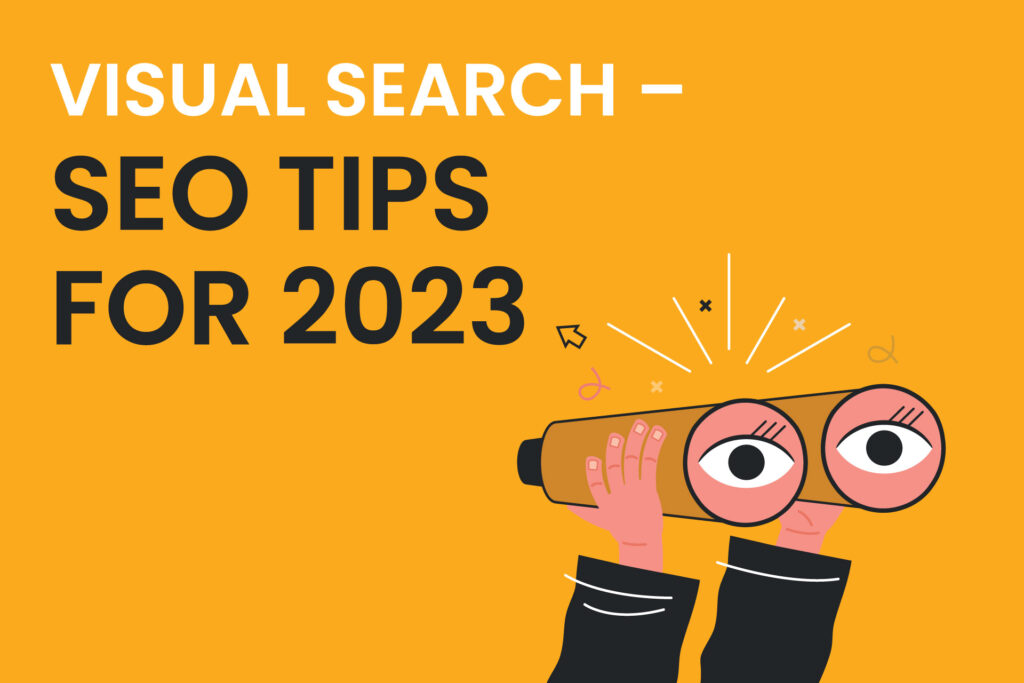
Keep reading to find out how your business can use this exciting technology advantage!
What is visual search?
Ben Silbermann, a famous Internet entrepreneur and CEO of Pinterest, said a few years ago that “the future of search will be all about pictures, not keywords”.
We can agree with him on this issue, and it is the huge success of Pinterest that tells us that visual search will be the main one in the future.
But, what is a visual search exactly?
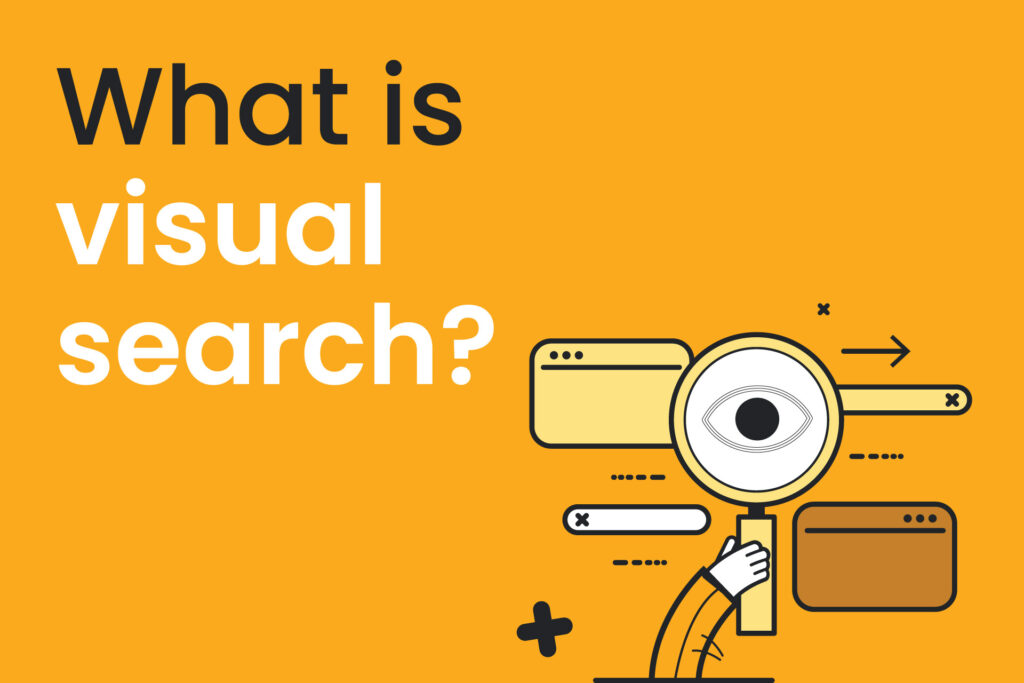
Visual search is a type of search engine that uses images instead of text or voice.
It operates on the idea that it’s much easier to identify an object in a picture, rather than try to articulate it in words.
The concept is simple, just like voice search. With the popularity of visual content growing every day, visual search is no longer a luxury, but a necessity.
It has become an essential technology for businesses to understand their customers’ needs and preferences.
In a world where images are the new language, visual search offers a powerful solution – It is especially useful for e-commerce stores because with its help they can provide incomparably better search results.
How is visual search different from image search?
It’s important to understand the difference between visual search and image search, as they are two distinct types of search.

While image search is conducted using words, visual search is part of the “sensory search” trend.
In other words, visual search uses the image itself as a search input, typically through the use of a camera or image recognition software.
This technology is especially useful for shopping, allowing users to snap a picture of an item and find similar products.
How does visual search work?
Visual search is a fascinating technology that allows computers to recognize objects and search for them based on visual cues.

Similar to the way our brains process information, visual search technology identifies visual patterns and matches them to images to complete your search.
What makes this technology so useful is its ability to understand and process different types of visual information.
Whether it’s a picture of a person, an object, or even a landscape, visual search technology can quickly identify it and return accurate, relevant results.
The advancement of artificial intelligence and machine learning is only accelerating the capabilities of visual search technology, making it an exciting tool to watch as it continues to evolve.
Why is visual search important?
In today’s ever-evolving digital landscape, a visual search is a vital tool that every digital marketer must incorporate into their strategy.
As users become more accustomed to conducting visual searches, it has become clear how much it has changed search behavior, leading to a new way to interact with them.
When shopping in physical stores, customers conduct visual searches. It is only natural that online shopping would be no different.
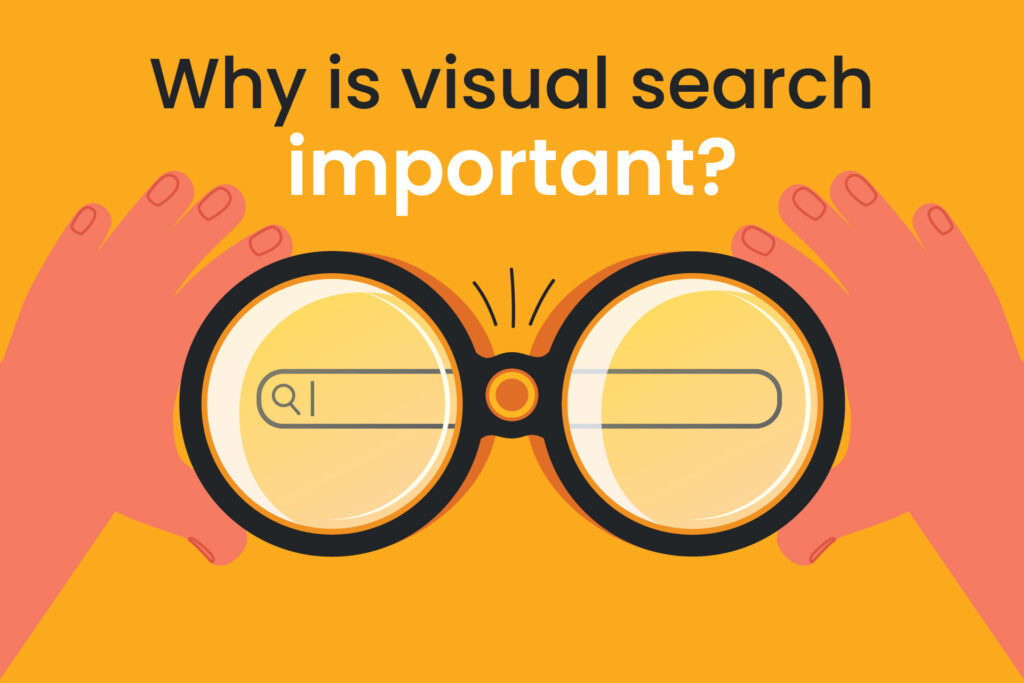
By linking seemingly unrelated items, visual search enables a level of exploration and discovery that traditional search methods cannot match.
Thus, marketers must adopt visual search to remain competitive in today’s fast-paced e-commerce landscape.
Primary benefits of implementing visual search
There are several benefits to implementing visual search in various industries, including:
- Enhanced user experience
- Increased sales and conversions
- Improved customer engagement
- Better search accuracy
- Competitive advantage
- Valuable insights
- Increasing profits
- Cross-selling
Which search engines are used for visual search?
As visual search is a constantly growing trend and an increasing number of companies are implementing it as one of the features in their search engines.
Each search engine has different search functionalities. It’s not even perfect yet, but it doesn’t affect popularity.
We will take a look at the following visual search engines, apps, their use, and differences:
- Google Lens
- Pinterest Lens
- Snapchat Visual Search
- eBay Image Search
- Bing Visual Search
- Amazon camera search/Amazon StyleSnap
- TinEye
- Clarifai
Related: SEO isn’t dead. It is just evolving.
1. Google Lens
In the world of visual search tools, Google Lens is one of the most widely recognized and frequently used options.

Created by Google, this innovative application is designed to allow users to search for whatever they see.
Not only can it scan text and menus to translate information or find popular dishes, but it can also be used to identify landmarks, plants, and animals.
However, the main focus of this article lies in its ability to enhance visual searches.
Imagine walking down the street and catching a glimpse of a stunning handbag or shirt in a boutique window – with a quick snap and scan through Google Lens, you can easily locate similar products without the hassle of endless scrolling or searching.
2. Pinterest Lens
Pinterest Lens is a visual search tool that allows users to take a picture of an object and find related products or ideas.
Recognizing the importance of the visual search for its users, the website introduced the Pinterest Lens in 2017.
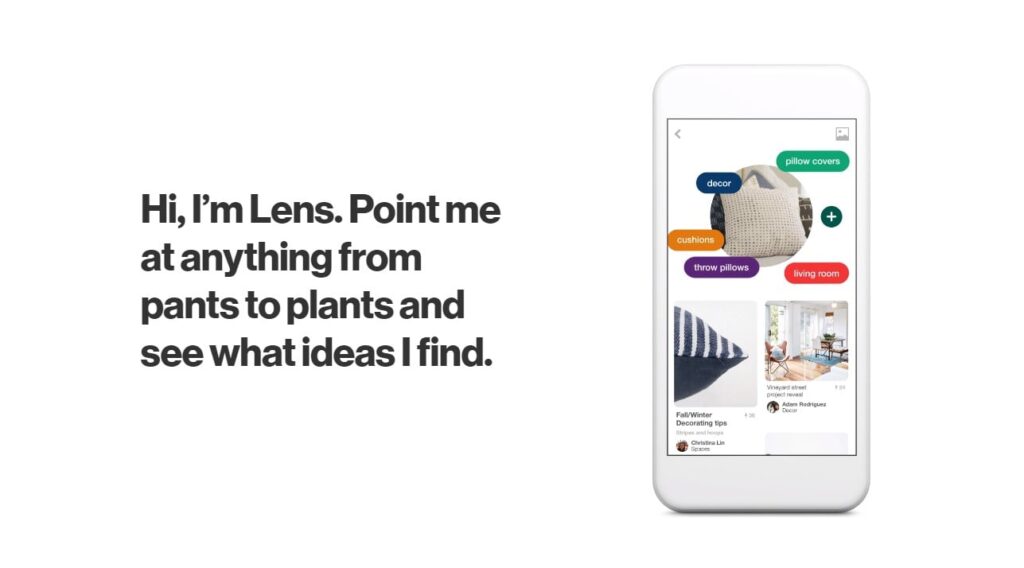
This tool allows users to easily search for items they see on the platform and even make purchases directly from the website.
With over 85% of users opting for visual searches when shopping for clothes or furniture, it’s no wonder why this feature has become so popular.
Finally, with the Pinterest Lens, users can easily turn their inspiration into reality with just a few clicks.
3. Snapchat Visual Search
Similar to Google Lens, Snapchat’s Visual Search allows users to point their camera at a product or barcode and then hold the button on the screen.
The app then searches for the item and presents users with an Amazon card containing a link to the product.
It’s not clear how widely used this feature is, but given Amazon’s status as one of the largest eCommerce companies in the world, it’s safe to assume that Visual Search is proving to be a valuable tool for many consumers.
4. eBay Image Search
eBay has stepped up its game by introducing eBay Visual Search in July 2018, enhancing its online shopping experience.
The search engine uses artificial intelligence and has learned over 130 million images, making the search process more efficient and accurate.
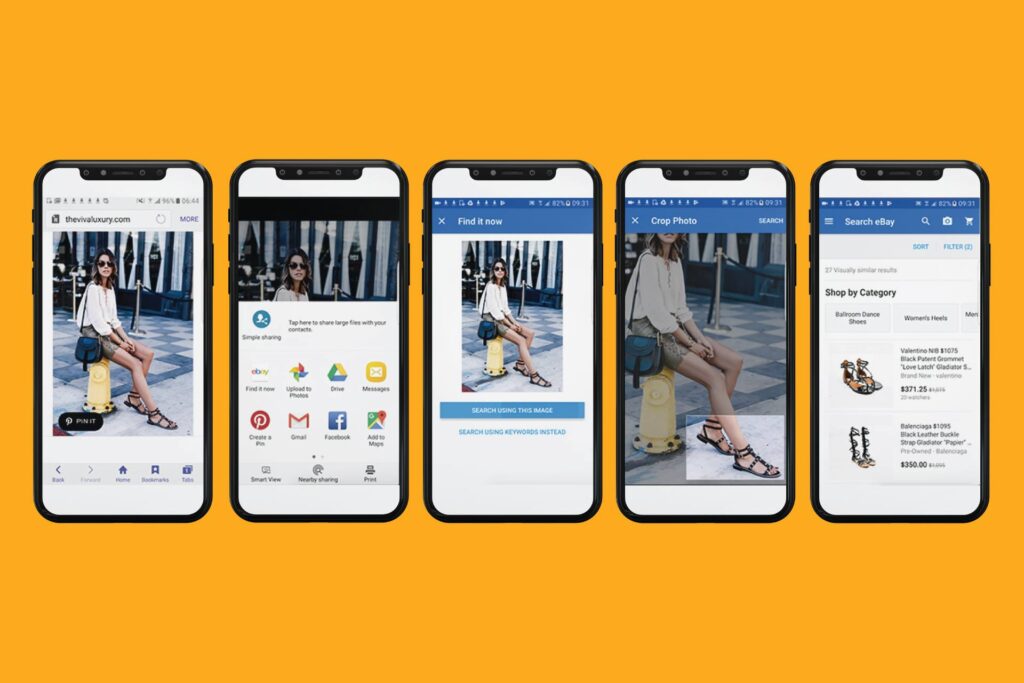
As one of the largest eCommerce sites in the world, eBay’s utilization of image search technology showcases its commitment to providing its customers with the most innovative and efficient shopping experience possible.
5. Bing Visual Search
Bing Visual Search is a powerful tool that enables users to search for images uniquely.
Rather than entering a traditional text-based query, users can leverage an existing image or even draw their search query to find visually similar results.
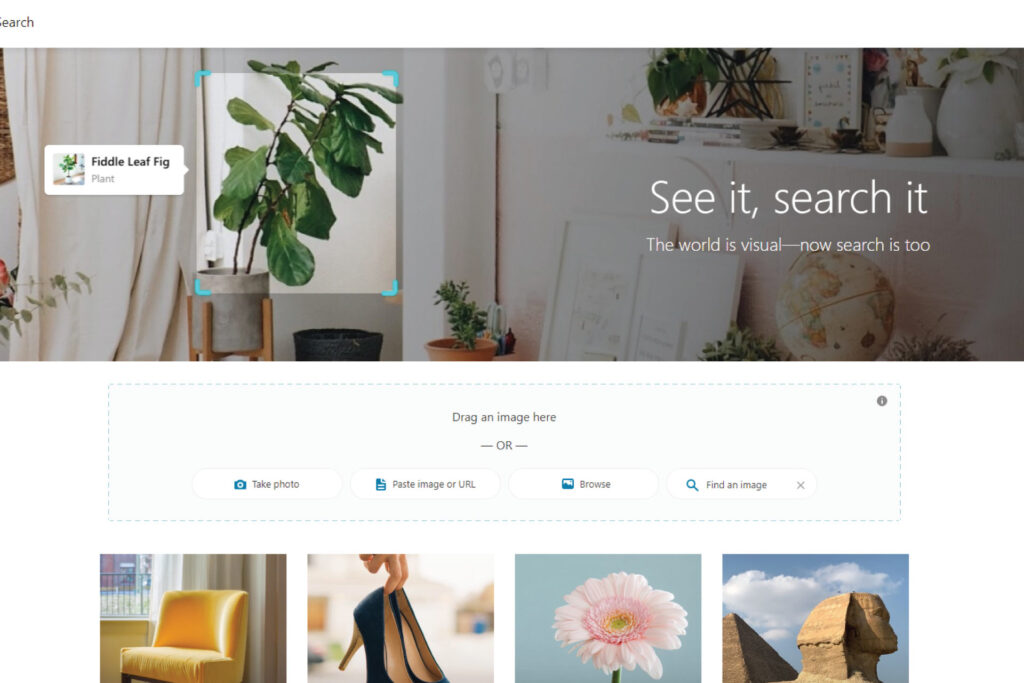
Using Bing visual search you can explore nearby places, identify plants and animals, find similar items, and so on.
Moreover, the tool offers a seamless and intuitive user experience, making it easy for anyone to use, regardless of technical expertise.
6. Amazon Rekognition / Amazon StyleSnap
They introduced visual search back in 2009 and since then it has been significantly improved.
Amazon StyleSnap is a visual search app that has been around since 2019 and this app allows you to get relevant search results after you take a picture. It is very useful to navigate through the millions of products available in the Amazon store.
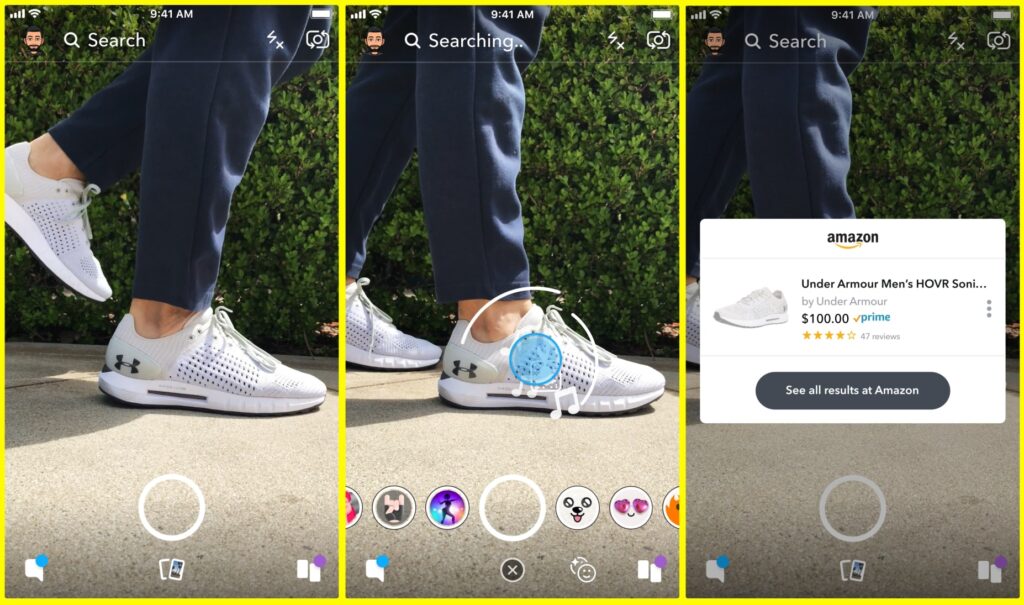
They have also implemented augmented reality, so you can see what a product would look like in your environment.
7. TinEye
TinEye has revolutionized the way we search for information online.
This reverse image search engine provides a reliable and efficient tool for users to identify the origins and sources of images available on the internet.
With TinEye, you can upload an image and discover where it has been published and used across the web, eliminating the tedious process of manually searching through multiple websites.
This unique technology has become an essential tool for brands and individuals seeking to protect their intellectual property and prevent misuse of their copyrighted content.
8. Clarifai
Clarifai is a powerful visual search and image recognition tool that can transform various applications with its advanced features.
With the help of Clarifai, users can conduct product searches with ease, ensure effective image moderation, and even discover new content.
This highly sophisticated tool utilizes artificial intelligence and machine learning to deliver accurate results, making it a go-to option for businesses and professionals.
For more SEO tips
How to optimize your images for visual search?
By now, it is completely clear to you that visual search is a very important thing both today and in the future. And that it will probably become even more important than text searches.
However, what you need to know is that images need to be optimized in the right way to be visible for this type of search.

Although algorithms have their ways of processing each image, the whole process will be much more effective if you know how to optimize them.
So, we are going to present to you the most important steps for optimizing images for visual search:
- Size and file types
- Image titles
- Alt tags
- Descriptions
- Structured data and sitemaps
Size and file types
High-quality images are an absolute must.
However, it is very important to keep in mind that you have to strike a balance between high quality and the size of the file.
If you ignore the file size, it will probably have a bad effect on the loading speed of your website, which you must avoid.
You need to compress the image, which will not significantly impair the quality, and the load speed will be fast.
This way you will have high-quality images on your website, but also you will be able to offer a great user experience plus a positive impact on SEO.
Another thing to pay attention to is the file type.
BMP, GIF JPEG, and PNG are among the most used types and are also supported for search on Google Lens and other search engines.
Each of these types has pros and cons, and in addition to knowing these pros and cons, also always check if that type is supported for visual search before implementing it on the website.
Image titles
Make sure to add a title attribute, as well. This is what appears when users hover their mouse over an image.
Don’t let users see a key smash, instead, write something coherent.

Additionally, the search engine uses the title to determine the content of the image. That is why the titles must be descriptive.
You shouldn’t leave generic titles like “1234.jpg”
Alt tags
An alternative text called both “alt tags” and “alt descriptions” may be the most important part of image optimization, so it’s good to spend a few minutes working on it.
Add alternative tags to every product image you upload on your website. Make sure they’re detailed and contain the appropriate keywords.
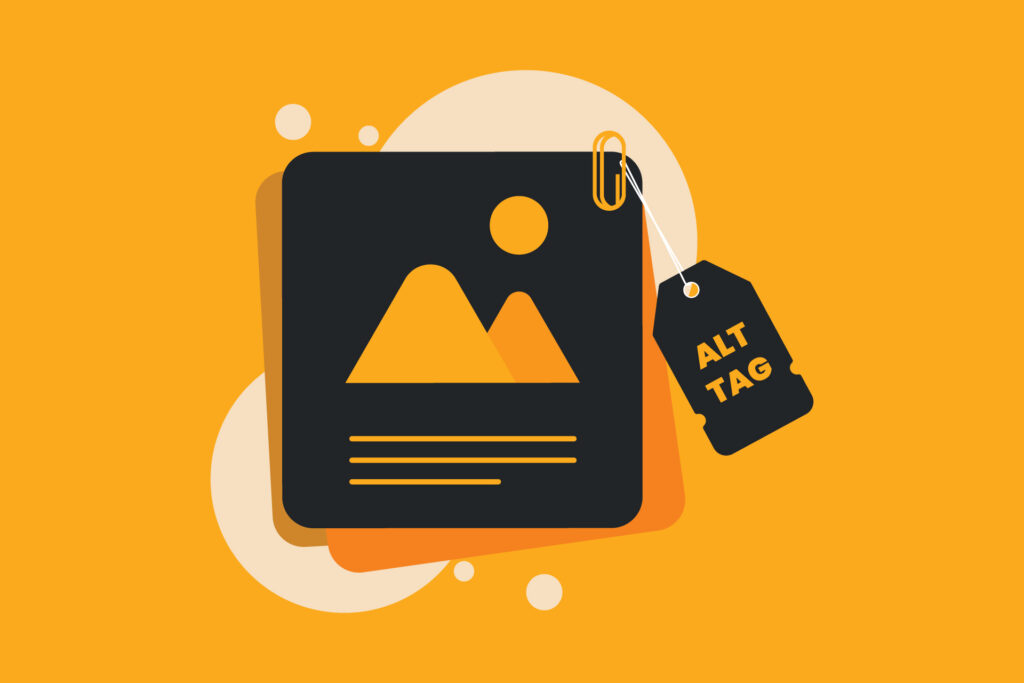
No matter if you’re selling furniture or clothes, include the colors and designs in the tags, because this is what people care about.
Also, make sure the descriptions are as coherent as possible, you don’t want to confuse the search engine with incorrect grammar and similar mistakes.
Related: All about Instagram Alt Text.
Descriptions
Not every platform allows you to add an image description. But if you use a content management platform like WordPress, then you will be able to display an image description to the user.
This is an option you should take advantage of because it will positively affect your visibility and rank on search engines.
Structured data and sitemaps
Structured data is essential to any content found on your website.
It is a code that especially emphasizes certain parts of the content, and thus facilitates the job for search engines and increases the quality and preciseness of the obtained results.
This also applies to structured data for images.
Sitemaps are used to indicate the structure of a website to the search engine to help better understand the exact link between image and content.
When you implement a sitemap, it will improve the image’s ranking because the search engine will be able to find images and index them.
Visual search trends for 2023
Trends are always changing, it is no surprise.

To end this article, we will briefly tell you about some of the main visual search trends for 2023 and beyond:
- Mobile-first approach
- Influencer marketing
- Chatbots
- Image-controlled browsing
- Combining visual search with text
Mobile-first approach
Smartphones are an integral part of our daily lives.
So it should come as no surprise that one of the main visual search trends for this year is the use of a smartphone camera.
All you have to do is turn on the camera and take a photo of a certain thing or product, and then the search engine you use will find a similar product all over the internet.
Influencer marketing
In today’s marketing landscape, influencer marketing has become a necessity.
It allows brands to tap into an influencer’s already-established audience and promote their products to a large and engaged group of potential customers.
By using visual search, influencers can showcase all of a brand’s products in a single post or video, making it easier for people to buy and facilitating a more seamless shopping experience.
Chatbots
All major e-commerce sites but also sites, in general, have implemented a chatbot which is a computer program that simulates a conversation between two people to solve a problem.

A very useful thing that will provide 24/7 help to your customers and also reduce the workload for your employees at customer service.
If you implement a chatbot on your website, you can use the chatbot and visual search together to create the best possible shopping experience for your customers.
Image-controlled browsing
It will become increasingly popular for internet browsing to be fully image-powered.
Although text search will probably always remain available, more and more companies will launch web browsers that will be based entirely on visual search.
The goal is to provide the most relevant and accurate possible results, much more accurate than using text search, and also more convenient than voice search.
Combining visual search with text
As technology continues to advance, marketers have the opportunity to leverage the power of both visual search and text search to improve their marketing strategy.
Rather than viewing visual search as a competitor to text search, they should find ways to integrate the two.
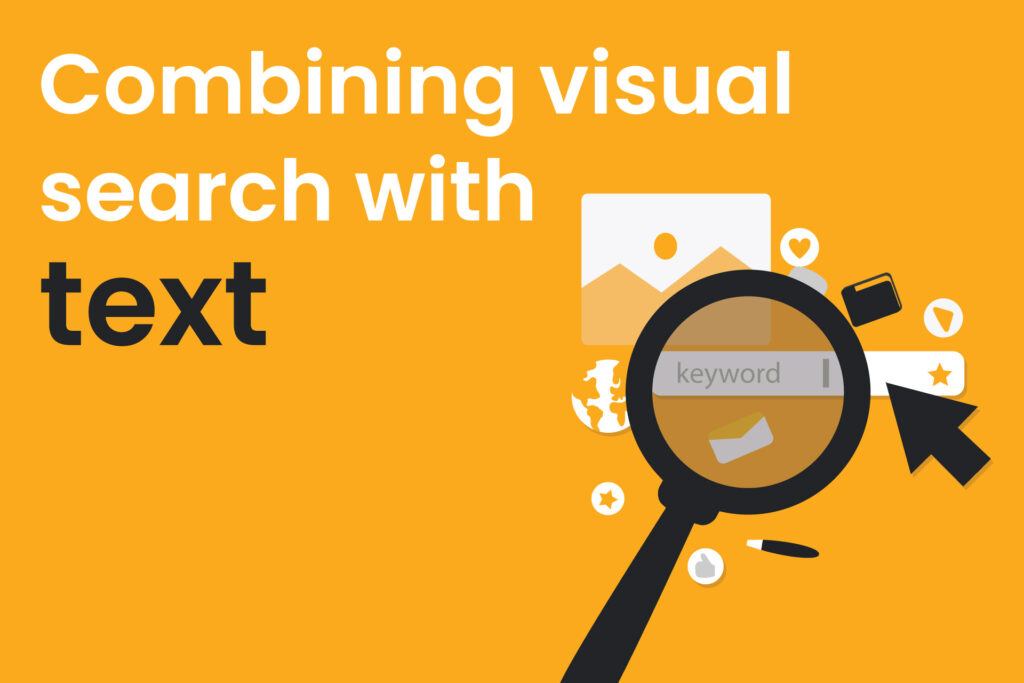
Image-centered social media channels like Google, Pinterest, Instagram, and Snapchat are leading the charge in integrating visual search.
With the proper organization and structuring of photos on these platforms, they can become more easily identifiable by visual search engines.
By utilizing both visual and text-based search methods, marketers can open up new opportunities to connect with their audience and increase their presence online.
Conclusion
To sum up, visual search helps people save up a ton of time and helps them in the process of shopping.
It is equally beneficial to all the owners of e-commerce stores.
Moreover, it’s been gaining in popularity for the last few years, and SEO specialists predict that in 2023, it will be used even more.
The engines can find your images and display your products when someone is looking for something similar to them, so you have to be sure to optimize your images.
Pay attention to image quality, file size, alt tags, descriptions, sitemaps, and other things.
Need help in optimizing for visual search?
We wish you good luck with the visual search in 2023 and thank you for taking the time to read our guide!





